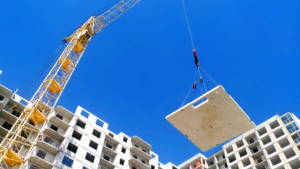
Total foreign trade in dairy products in November amounted to $54.7 million, up 3.3% from October ($53 million), according to the Ukrainian Dairy Industry Association (UDIA).
The industry association noted that export volumes in November continued to grow for the second month in a row and amounted to $23.84 million, adding 12.7% compared to October ($21.16 million) and 15.4% compared to September ($20.7 million).
At the same time, the value structure of exports in November 2025 was as follows: condensed milk and cream – 37%, cheese – 25%, butter – 21%. The value structure of exports in November 2025 compared to November 2024 changed slightly: the share of milk and condensed cream increased (from 30% to 37%) against the backdrop of a decrease in the share of cheese (from 32% to 25%).
Imports in November amounted to $30.9 million, down 2.9% from October ($31.8 million) and 2.2% from September ($31.6 million). In November 2025 compared to November 2024, the value structure of imports did not change significantly, in particular, the share of all types of cheese remained at about 84%.
The export-import balance in November was negative (-$7.0 million), as it was in October (-$10.6 million) and September (-$10.9 million), the association noted.
The ratio of exports to imports was 0.77 in November, 0.67 in October, and 0.65 in September.
Imports of dairy products in November this year exceeded exports by 1.3 times, the SMU summarized.

Copper prices on Monday updated the historical maximum on fears of a supply shortage in the global market. Quotes of three-month futures for copper on the London Metal Exchange (LME) by 13:25 Q1 rose by 0.3% to $11,653 per ton. At the same time during the session they rose to a record $11,771 per ton.
“Supply shortages continue to provoke panic buying,” The Wall Street Journal quoted analysts at ANZ Research as saying.
The market has been pressured this year by a series of problems at major oilfields. In addition, the build-up of stocks in the U.S. because of fears of the introduction of the authorities of the country in the next year of duties on imports of refined copper increases the risk of shortages in other regions.
Prices are also supported by the promise of the Chinese authorities to strengthen support for the economy to stimulate domestic consumption through a “more proactive” fiscal policy and the preservation of “moderately soft” monetary policy, analysts say ANZ Research.
Earlier, the information and analytical center Experts Club released a video dedicated to global copper production and the leading producing countries – https://youtube.com/shorts/_h8iU50z8C0?si=a-XkgGEfeUxseQNa.

Ukraine exported 26,000 tons of wheat flour in the first five months of the 2025-2026 marketing year (MY, July-June), which is 11% less than in the same period of the previous MY. of which 5.4 thousand tons (-7%) were shipped in November, according to the information and analytical agency “APK-Inform.”
Analysts specified that the main volume of exports went to Moldova (30%), the Czech Republic (18%), and Palestine (16%).
“Importers have significantly reduced their purchases of Ukrainian products. For example, Moldova purchased 7.9 thousand tons this season, which is 10% less than in the previous season, and the Czech Republic purchased 4.7 thousand tons (-23%). Palestine reduced its imports, purchasing only 4.3 thousand tons compared to 5.7 thousand tons in the 2024/25 season (-25%),” experts said.
According to their estimates, in July-November 2025/26 MY, Ukraine produced 371.7 thousand tons of flour, which is 8% less than in the same period of 2024/25 MY.
“In general, wheat processing in 2025/26 MY is expected to reach 2.6 million tons, which is 2% less than last season,” APK-Inform predicts.

The Serbian Economist reports that the candidate of the National Liberal Party of Romania (PNL), backed by Prime Minister Ilie Bolojan, Ciprian Ciuc won the early election for mayor of Bucharest with about 36% of the votes after almost all ballots were counted.
According to Romanian and international media, Ciuc beat far-right Alliance for the Unification of Romanians (AUR) candidate Anca Alexandrescu, who received about 22% of the vote, as well as Social Democratic Party (PSD) nominee Daniel Belutse, who came in third. The election was seen as a test of the influence of AUR, which is leading in part of the nationwide polls.
The post of mayor of the Romanian capital became vacant after the former mayor Nicusor Dan was elected president of the country in 2025, necessitating an extraordinary vote. The victory of the EU-oriented liberal candidate is seen by observers as an important political success for incumbent Prime Minister Bolojan and his pro-European ruling coalition amid the growing popularity of right-wing and far-right forces in the region.
Analysts note that the outcome of the Bucharest election reduces the risk that one of the first capitals of an EU member state could become a city governed by a radical right-wing party, while strengthening the government’s position ahead of further political battles at the national level.
https://t.me/relocationrs/1901

Agroholding “Agrain” has expanded the capabilities of the “Service Grain” elevator complex (Odesa region) for faster reception, storage, and shipment of grain, bringing the elevator’s capacity to 100,000 tons, the agroholding’s press service reported on Facebook.
According to the report, a 200-meter railway branch line has been laid to the elevator complex, allowing up to 30 cars to be shipped per day.
In addition, the grain reception system has been optimized: there are three nodes for unloading motor vehicles, including heavy-duty vehicles (up to 20 m), thanks to which the elevator is capable of receiving up to 1,700 tons of grain per day.
Storage capacity has been increased to 100,000 tons, for which KMZ Industries equipment has been purchased to provide aeration, cleaning, and quality control of the grain.
“Now it is possible to receive and ship both large and small batches of grain at the same time in the shortest possible time,” said specialists from the agricultural holding’s elevator complex.
Agrain is engaged in the cultivation and storage of grain and oilseeds, as well as livestock farming. Before the full-scale Russian invasion, the agricultural holding consisted of 11 agricultural enterprises. It cultivated about 110,000 hectares in the Zhytomyr, Kharkiv, Chernihiv, Odesa, and Cherkasy regions.
The owner of the holding is SAS Investcompagnie (France).

The Ukrainian Building Awards 2025, the leading national award in the field of development, architecture, and construction, will be held for the second time on December 18 at the HYATT hotel complex in Kyiv. The award, already dubbed the “Construction Oscars,” aims to identify and recognize companies, architects, and leaders whose decisions and projects are shaping the future of Ukraine.
The Ukrainian Building Awards 2025 is not just an award ceremony, but a symbol of professional recognition, reputation, and success, where each statuette carries the “weight of the year.” The event will bring together the country’s most influential developers, architects, investors, and builders under one roof for a spectacular end to the year and recognition of the leaders.
The event program covers the entire day:
The evening will be hosted by popular presenters Marichka Padalko and Nazarii Volyanskyi. Guests can look forward to a rich entertainment program: Oleksii Kogan’s jazz band will create a lively festive atmosphere, and the band S.K.A.I. will give a full concert lasting over an hour.
The organizers emphasize that this evening will be a joint festive, Christmas, and New Year’s finale for the entire industry, a place where the names of those who are creating a new Ukraine will be announced.
“The 2025 Construction Oscar is the highlight of the year for those who are creating a new Ukraine. Be among the best – your story should be heard from the stage,” the organizers note.
Registration details and tickets:
Official website: www.ubc-ua.info/uba
Contact phone number: 044 461 91 28
Organizer: DMNTR team.
About the Ukrainian Building Awards:
The Ukrainian Building Awards is a leading national professional award that annually recognizes achievements and innovations in the field of development, architecture, and construction in Ukraine. The aim of the award is to support high quality standards, identify industry leaders, and promote its development.
Interfax-Ukraine is the information partner